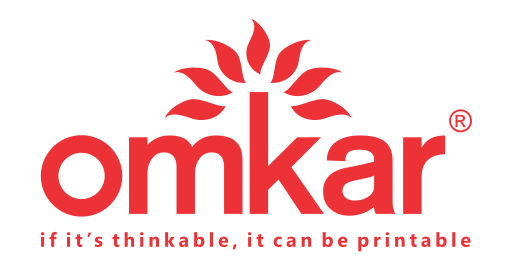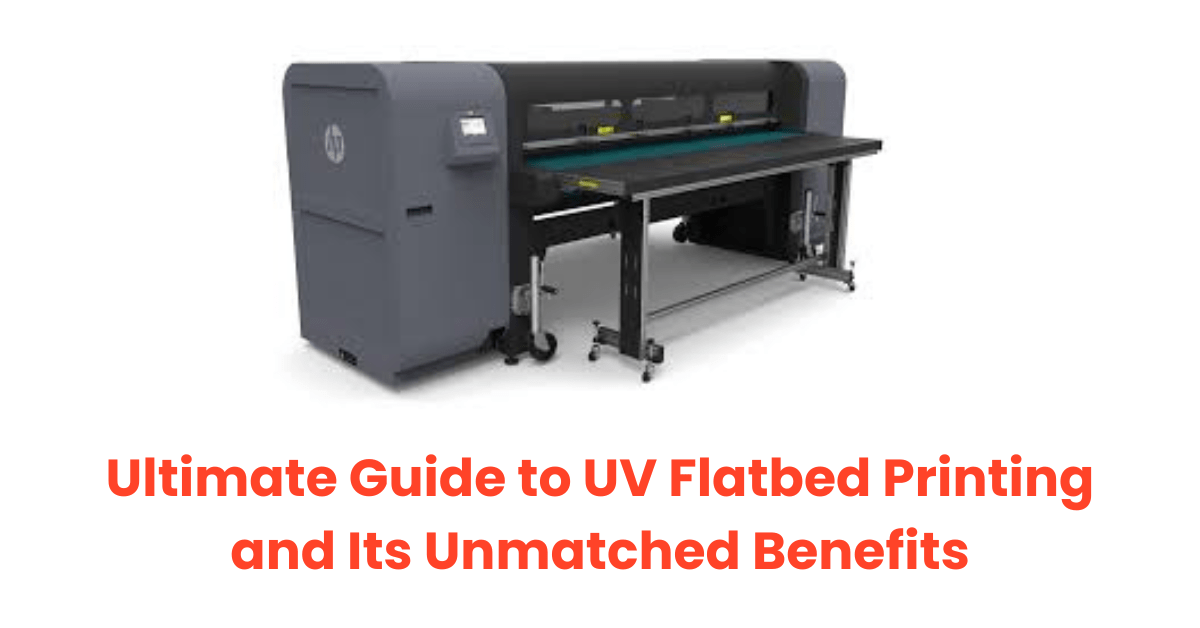Overview of UV Flatbed Printing
In the dynamic world of printing, UV flatbed printing has emerged as a revolutionary technology, transforming how we print on various materials. This cutting-edge printing method offers unparalleled versatility, precision, and efficiency, making it a game-changer for businesses and creatives alike. From commercial signage to personalized gifts, UV flatbed printing is redefining the possibilities in the printing industry.
Importance in Modern Printing Industry
The modern printing industry demands high-quality, cost-effective, and environmentally friendly solutions. UV flatbed printing meets these demands by providing exceptional print quality on a wide range of materials, reducing waste, and using eco-friendly inks. This technology is not only beneficial for businesses looking to enhance their branding and marketing efforts but also for artists and designers seeking to bring their creative visions to life.
Purpose of the Blog Post
This comprehensive guide aims to delve deep into the world of UV flatbed printing, exploring its technical aspects, advantages, applications, and why it stands out as a superior option compared to traditional printing methods. By the end of this post, you’ll have a thorough understanding of UV flatbed printing and how it can benefit various industries and applications.
Understanding UV Flatbed Printing
Definition and Basic Concept
UV flatbed printing is a digital printing technology that uses ultraviolet (UV) light to cure or dry the ink as it is printed. The printer employs a flatbed table on which the material, or substrate, is placed, and the print head moves across the surface, depositing ink in the desired pattern. The UV light instantly cures the ink, creating a durable and vibrant print.
How UV Flatbed Printers Work
UV flatbed printers operate using a combination of advanced printing mechanisms and UV technology. Here’s a step-by-step breakdown of the printing process:
- Design Creation: The process begins with the creation of a digital design using graphic design software. This design is then converted into a format compatible with the UV flatbed printer.
- Material Placement: The substrate to be printed on is placed on the printer’s flatbed. The material is securely fixed to ensure precise printing.
- Ink Deposition: The printer’s print head moves across the flatbed, depositing UV-curable ink onto the substrate. The ink is dispensed in tiny droplets, allowing for high-resolution prints.
- UV Curing: As the ink is deposited, UV lights integrated into the print head or positioned alongside the print area instantly cure the ink. This immediate curing process ensures that the ink bonds firmly to the substrate, resulting in a durable and smudge-proof print.
- Final Product: Once the printing and curing processes are complete, the final product is ready to be removed from the flatbed. The result is a high-quality, vibrant print that adheres well to the chosen material.
Types of UV Flatbed Printers
UV flatbed printers come in various sizes and configurations, catering to different needs and applications. Here are the primary types:
- Small Format UV Flatbed Printers: These printers are designed for smaller prints and are ideal for businesses that require high-quality prints on smaller items such as promotional products, phone cases, and personalized gifts.
- Large Format UV Flatbed Printers: These printers are built for larger prints and can handle substantial substrates like large signage, displays, and industrial components. They offer greater flexibility in terms of print size and are suitable for businesses with high-volume printing needs.
Advantages of UV Flatbed Printing
Versatility in Materials
One of the most significant advantages of UV flatbed printing is its ability to print on a wide range of materials. Unlike traditional printing methods that are often limited to specific substrates, UV flatbed printers can handle diverse materials, including:
- Glass: Ideal for creating decorative glass panels, signage, and awards.
- Wood: Perfect for custom furniture, wall art, and promotional items.
- Metal: Suitable for industrial components, plaques, and labels.
- Acrylic: Great for signage, displays, and protective covers.
- Plastic: Used for promotional products, packaging, and prototypes.
- Ceramic: Ideal for personalized tiles, coasters, and decorative items.
This versatility allows businesses to explore new markets and expand their product offerings without needing multiple specialized printers.
High-Quality Output
UV flatbed printing delivers exceptional print quality, characterized by vivid colors, sharp details, and excellent resolution. The UV curing process ensures that the ink adheres firmly to the substrate, resulting in prints that are:
- Color Accurate: UV inks produce vibrant, true-to-life colors that enhance the visual appeal of printed materials.
- High Resolution: The fine droplets of UV ink enable high-resolution printing, capturing intricate details and producing crisp images and text.
- Durable: UV-cured prints are resistant to fading, scratching, and moisture, making them suitable for both indoor and outdoor applications.
Environmental Benefits
As businesses and consumers become more environmentally conscious, the demand for eco-friendly printing solutions has increased. UV flatbed printing meets this demand in several ways:
- Eco-Friendly Inks: UV inks are free from volatile organic compounds (VOCs), which are harmful to the environment and human health. This makes UV flatbed printing a greener alternative to traditional printing methods that use solvent-based inks.
- Reduced Waste: The precision of UV flatbed printing minimizes ink wastage, and the ability to print on demand reduces the need for large print runs and excess inventory.
Cost-Effectiveness
UV flatbed printing offers significant cost advantages compared to traditional printing methods:
- Lower Setup Costs: Unlike offset printing, which requires the creation of printing plates, UV flatbed printing is a digital process, eliminating the need for costly setup.
- Flexibility and Customization: UV flatbed printing allows for easy customization and short print runs, making it an economical choice for personalized and limited-edition products.
- Long-Term Savings: The durability and quality of UV-cured prints reduce the need for reprints and replacements, resulting in long-term cost savings.
Applications of UV Flatbed Printing
Commercial Printing
UV flatbed printing is widely used in commercial printing for creating:
- Signage and Displays: Eye-catching signs, banners, and displays for retail stores, events, and trade shows.
- Advertising Materials: High-quality posters, flyers, and promotional materials that stand out and attract attention.
Industrial Uses
In industrial settings, UV flatbed printing is used for:
- Product Prototypes: Creating realistic prototypes of products for testing and presentation.
- Custom Components: Printing on specialized materials for custom parts and components.
Artistic and Creative Projects
Artists and designers leverage UV flatbed printing for:
- Art Prints: Producing high-quality reproductions of artwork on various substrates.
- Custom Decor: Creating unique home decor items such as custom wall panels and furniture.
Personalized Items
UV flatbed printing is perfect for producing personalized items, including:
- Customized Gifts: Printing custom designs on gifts such as photo frames, mugs, and keychains.
- Promotional Products: Creating branded promotional items for marketing and giveaways.
UV Flatbed Printing vs. Traditional Printing Methods
Comparison with Offset Printing
- Setup and Production Time: UV flatbed printing offers faster setup and production times, as it eliminates the need for creating printing plates.
- Flexibility and Customization: UV flatbed printing allows for easy customization and short print runs, whereas offset printing is more suited for large-volume production runs.
Comparison with Screen Printing
- Material Compatibility: UV flatbed printing can handle a wider range of materials compared to screen printing, which is typically limited to specific substrates.
- Detail and Precision: UV flatbed printing provides higher resolution and finer detail than screen printing, making it ideal for intricate designs.
Comparison with Other Digital Printing Methods
- Inkjet and Laser Printing: While inkjet and laser printers are suitable for paper and some plastics, UV flatbed printers excel in printing on diverse substrates and producing more durable prints.
Technological Innovations in UV Flatbed Printing
Advances in Printer Technology
Recent technological advancements have significantly improved the performance of UV flatbed printers:
- Improved Print Heads: Modern print heads offer higher resolution and faster printing speeds, enhancing print quality and efficiency.
- Faster Printing Speeds: Innovations in printer mechanics and software have led to increased printing speeds, allowing for higher productivity.
Developments in UV Ink
- Durability and Adhesion: New formulations of UV ink provide better adhesion to various substrates and increased durability.
- Special Effects: UV inks can produce special effects such as glossy or matte finishes, adding value to printed products.
Integration with Digital Design Software
- Enhanced Precision: Integration with advanced design software allows for precise control over the printing process, ensuring accurate reproduction of digital designs.
- Ease of Use: User-friendly software interfaces make it easier for operators to set up and manage print jobs.
Choosing the Right UV Flatbed Printer
Key Factors to Consider
When selecting a UV flatbed printer, consider the following factors:
- Print Size and Resolution: Choose a printer that meets your size and resolution requirements.
- Material Compatibility: Ensure the printer can handle the substrates you plan to print on.
- Speed and Efficiency: Consider the printer’s speed and efficiency to meet your production needs.
Top Brands and Models
Here are some leading manufacturers and their popular models:
- Canon: Known for its high-quality printers with excellent resolution and color accuracy.
- HP: Offers versatile printers with advanced features and reliable performance.
- Epson: Renowned for its durable printers and eco-friendly ink solutions.
Cost Considerations
Evaluate the costs associated with UV flatbed printing:
- Initial Investment: Compare the upfront cost of different printer models.
- Operational Costs: Consider the cost of inks, maintenance, and other operational expenses.
- ROI Analysis: Calculate the potential return on investment based on your printing volume and application.
Future Trends in UV Flatbed Printing
Emerging Technologies
The future of UV flatbed printing is shaped by emerging technologies:
- AI and Automation: Artificial intelligence and automation are enhancing the efficiency and precision of UV flatbed printers.
- Internet of Things (IoT) Integration: IoT integration allows for real-time monitoring and control of printing processes, improving productivity and reducing downtime.
Market Growth and Potential
The UV flatbed printing market is poised for significant growth:
- Industry Projections: Analysts predict the continued expansion of the UV flatbed printing market, driven by increasing demand for high-quality, customized printing solutions.
- New Applications and Opportunities: Ongoing innovation opens up new applications and opportunities for UV flatbed printing, from industrial manufacturing to personalized consumer products.
Case Studies and Success Stories
Real-World Examples of UV Flatbed Printing
Explore real-world examples of businesses and individuals who have successfully leveraged UV flatbed printing:
- Business Success Stories: Learn how companies have used UV flatbed printing to enhance their branding, reduce costs, and increase customer satisfaction.
- Creative and Artistic Achievements: Discover how artists and designers have utilized UV flatbed printing to create stunning, one-of-a-kind pieces.
Lessons Learned and Best Practices
Gain insights into best practices for using UV flatbed printing effectively:
- Tips for Optimal Results: Practical tips for achieving the best print quality and maximizing the potential of your UV flatbed printer.
- Common Challenges and Solutions: Address common challenges faced by UV flatbed printer users and how to overcome them.
Recap of Key Points
- UV flatbed printing offers unparalleled versatility, high-quality output, environmental benefits, and cost-effectiveness.
- It is suitable for a wide range of applications, from commercial printing to artistic projects.
- Technological innovations continue to enhance the capabilities and efficiency of UV flatbed printers.
Final Thoughts on the Benefits of UV Flatbed Printing
UV flatbed printing stands out as a superior option for businesses and individuals seeking high-quality, customizable, and eco-friendly printing solutions. Its ability to print on various materials and produce durable, vibrant prints makes it an invaluable tool in the modern printing landscape.
Encouragement to Explore UV Flatbed Printing
Whether you’re a business owner, artist, or hobbyist, UV flatbed printing offers endless possibilities. Explore this innovative technology to elevate your printing projects and achieve outstanding results.

